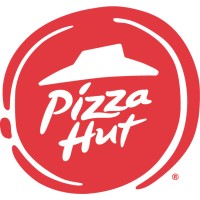
Pizza Hut Company Cyber Security Posture
pizzahut.comPizza Hut, a subsidiary of Yum! Brands, Inc. (NYSE: YUM), was founded in 1958 in Wichita, Kansas, and since then has earned a reputation as a trailblazer in innovation with the creation of icons like Original® Pan and Original® Stuffed Crust pizzas. In 1994, Pizza Hut pizza was the very first online food order. Today, Pizza Hut continues leading the way in the digital and technology space with over half of transactions worldwide coming from digital orders. A global leader in the pizza category, Pizza Hut operates more than 19,500 restaurants in 110 markets and territories. Through its enormous presence, Pizza Hut works to unlock opportunity for its team members and communities around the world.
Pizza Hut Company Details
pizza-hut
79922 employees
336130.0
722
Restaurants
pizzahut.com
Scan still pending
PIZ_1596756
In-progress
Between 900 and 1000
This score is AI-generated and less favored by cyber insurers, who prefer the TPRM score.
 Pizza Hut Global Score
Pizza Hut Global Score.png)

Pizza Hut Company Scoring based on AI Models
| Model Name | Date | Description | Current Score Difference | Score |
|---|---|---|---|---|
| AVERAGE-Industry | 03-12-2025 | This score represents the average cybersecurity rating of companies already scanned within the same industry. It provides a benchmark to compare an individual company's security posture against its industry peers. | N/A | Between 900 and 1000 |
Pizza Hut Company Cyber Security News & History
| Entity | Type | Severity | Impact | Seen | Url ID | Details | View |
|---|---|---|---|---|---|---|---|
| Yum! Brands | Breach | 60 | 3 | 04/2023 | YUM33429523 | Link | |
Rankiteo Explanation : Attack with significant impact with internal employee data leaksDescription: Yum! Approximately 300 restaurants in the UK were closed for one day as a result of a cyberattack that Brands had to endure that required the company to shut down its systems. The exposed information includes names, driver’s license numbers, non-driver Identification Card Number, and other types of personal identifiers. The company investigated the security breach with the help of third-party cybersecurity experts, to identify the scope of the incident. They investigated the incident and also provided complimentary credit monitoring and identity protection services for two years via IDX. | |||||||
Pizza Hut Company Subsidiaries

Pizza Hut, a subsidiary of Yum! Brands, Inc. (NYSE: YUM), was founded in 1958 in Wichita, Kansas, and since then has earned a reputation as a trailblazer in innovation with the creation of icons like Original® Pan and Original® Stuffed Crust pizzas. In 1994, Pizza Hut pizza was the very first online food order. Today, Pizza Hut continues leading the way in the digital and technology space with over half of transactions worldwide coming from digital orders. A global leader in the pizza category, Pizza Hut operates more than 19,500 restaurants in 110 markets and territories. Through its enormous presence, Pizza Hut works to unlock opportunity for its team members and communities around the world.
Access Data Using Our API

Get company history
.png)
Pizza Hut Cyber Security News
Bridging the Gap: Integrating Legal and Insurance Considerations into Restaurant Cybersecurity Response
This article explores how restaurants can better prepare for cyber incidents, understand third-party vendor risks, respond effectively when breaches occur.
Pizza Hut Australia’s Data Breach Impacts over 190K Customers
In September 2023, a threat actor said they breached Pizza Hut Australia's unsecured Amazon Web Services (AWS) endpoint and stole 1 million ...
Pizza Hut Australia hack: data breach exposes customer information and order details | Australia news
Pizza Hut's Australian operations have been hit by a cyber-attack, the company says, with customer data including delivery addresses and order ...
Yum Brands faces class action suits from employees after ransomware attack
The Taco Bell and KFC operator is facing litigation after some personal data of company employees was stolen in the attack.
KFC owner suffers data breach following ransomware attack | Cyber Security Hub
Personal data including driver's license number were stolen during an attack on KFC and Pizza Hut owner Yum! Brands.
Nearly 200k Pizza Hut customers affected by cyber hack
Nearly 200,000 Pizza Hut Australia customers have had their data leaked, following a cyber attack earlier this month.
KFC, Pizza Hut owner discloses data breach after ransomware attack
Yum! Brands, the brand owner of the KFC, Pizza Hut, and Taco Bell fast food chains, is now sending data breach notification letters to an ...
Pizza Hut, Taco Bell owner confirms data breach
The fast-food corporation said it was breached on January 13 when unknown attackers accessed the company's systems. The company did not specify ...
Data Breaches That Have Happened in 2024 & 2025 - Updated List
We've compiled a list of significant, recent data breaches (and a couple of important data leaks) that have taken place since January 1, 2022.

Pizza Hut Similar Companies

KFC US
KFC Corporation, based in Louisville, Kentucky, is one of the few brands in America that can boast about having a rich, 60-year history of success and innovation. In fact, KFC is the world's most popular chicken restaurant chain and a division of Yum! Brands, the world’s largest restaurant company.

Jack in the Box
Jack in the Box has always been the place for those who live outside the box. Where you can try new things and order what you want when you want it. Now, let’s get to the facts! Did you know Jack in the Box was founded on February 21, 1951, by a businessman named Robert O. Peterson in San Diego, Cal

Alsea
Alsea es el operador de restaurantes líder en América Latina y Europa, con marcas de reconocimiento global dentro de los segmentos de Comida rápida, Cafeterías y Restaurantes de servicio completo. ¡Nos distinguimos por nuestra entrega, pasión por los resultados y por ser una compañía autén

TGI Fridays
In 1965, TGI Fridays opened its first location in New York City. Today, there are 890 restaurants in 60 countries offering high quality, authentic American food and legendary drinks, bringing together all people from all places. The freeing and liberating spirit of "Friday" combined with our belief

Jollibee Group North America
Our Jollibee Group was founded in 1975 by Tony Tan Caktiong. With the help of his wife Grace, his family, and in-laws, they started everything with a small family business selling ice cream in the streets of Manila. Three years after starting, the family saw the opportunity for hot meals. They conve

Darden
Darden is a restaurant company featuring a portfolio of differentiated brands that include Olive Garden, LongHorn Steakhouse, Yard House, Ruth's Chris Steak House, Cheddar's Scratch Kitchen, The Capital Grille, Seasons 52, Eddie V's, and Bahama Breeze. Our people equal our success, and we are proud

Frequently Asked Questions
Explore insights on cybersecurity incidents, risk posture, and Rankiteo's assessments.
Pizza Hut CyberSecurity History Information
How many cyber incidents has Pizza Hut faced?
Total Incidents: According to Rankiteo, Pizza Hut has faced 1 incident in the past.
What types of cybersecurity incidents have occurred at Pizza Hut?
Incident Types: The types of cybersecurity incidents that have occurred incident Breach.
How does Pizza Hut detect and respond to cybersecurity incidents?
Detection and Response: The company detects and responds to cybersecurity incidents through third party assistance with Third-party cybersecurity experts and remediation measures with Complimentary credit monitoring and identity protection services for two years via IDX.
Incident Details
Can you provide details on each incident?

Incident : Cyberattack
Title: Cyberattack on Yum! Brands
Description: Approximately 300 restaurants in the UK were closed for one day as a result of a cyberattack that Yum! Brands had to endure, requiring the company to shut down its systems.
Type: Cyberattack
What are the most common types of attacks the company has faced?
Common Attack Types: The most common types of attacks the company has faced is Breach.
Impact of the Incidents
What was the impact of each incident?

Incident : Cyberattack YUM33429523
Data Compromised: names, driver’s license numbers, non-driver Identification Card Number, other types of personal identifiers
Downtime: One day
Operational Impact: 300 restaurants closed
Identity Theft Risk: High
What types of data are most commonly compromised in incidents?
Commonly Compromised Data Types: The types of data most commonly compromised in incidents are names, driver’s license numbers, non-driver Identification Card Number and other types of personal identifiers.
Which entities were affected by each incident?
Response to the Incidents
What measures were taken in response to each incident?

Incident : Cyberattack YUM33429523
Third Party Assistance: Third-party cybersecurity experts
Remediation Measures: Complimentary credit monitoring and identity protection services for two years via IDX
How does the company involve third-party assistance in incident response?
Third-Party Assistance: The company involves third-party assistance in incident response through Third-party cybersecurity experts.
Data Breach Information
What type of data was compromised in each breach?

Incident : Cyberattack YUM33429523
Type of Data Compromised: names, driver’s license numbers, non-driver Identification Card Number, other types of personal identifiers
Sensitivity of Data: High
Personally Identifiable Information: True
What measures does the company take to prevent data exfiltration?
Prevention of Data Exfiltration: The company takes the following measures to prevent data exfiltration: Complimentary credit monitoring and identity protection services for two years via IDX.
Investigation Status
What is the current status of the investigation for each incident?

Incident : Cyberattack YUM33429523
Investigation Status: Investigation completed
Post-Incident Analysis
What is the company's process for conducting post-incident analysis?
Post-Incident Analysis Process: The company's process for conducting post-incident analysis is described as Third-party cybersecurity experts.
Additional Questions
Impact of the Incidents
What was the most significant data compromised in an incident?
Most Significant Data Compromised: The most significant data compromised in an incident were names, driver’s license numbers, non-driver Identification Card Number and other types of personal identifiers.
Response to the Incidents
What third-party assistance was involved in the most recent incident?
Third-Party Assistance in Most Recent Incident: The third-party assistance involved in the most recent incident was Third-party cybersecurity experts.
Data Breach Information
What was the most sensitive data compromised in a breach?
Most Sensitive Data Compromised: The most sensitive data compromised in a breach were names, driver’s license numbers, non-driver Identification Card Number and other types of personal identifiers.
Investigation Status
What is the current status of the most recent investigation?
Current Status of Most Recent Investigation: The current status of the most recent investigation is Investigation completed.
What Do We Measure?
















Every week, Rankiteo analyzes billions of signals to give organizations a sharper, faster view of emerging risks. With deeper, more actionable intelligence at their fingertips, security teams can outpace threat actors, respond instantly to Zero-Day attacks, and dramatically shrink their risk exposure window.
These are some of the factors we use to calculate the overall score:
Identify exposed access points, detect misconfigured SSL certificates, and uncover vulnerabilities across the network infrastructure.
Gain visibility into the software components used within an organization to detect vulnerabilities, manage risk, and ensure supply chain security.
Monitor and manage all IT assets and their configurations to ensure accurate, real-time visibility across the company's technology environment.
Leverage real-time insights on active threats, malware campaigns, and emerging vulnerabilities to proactively defend against evolving cyberattacks.




